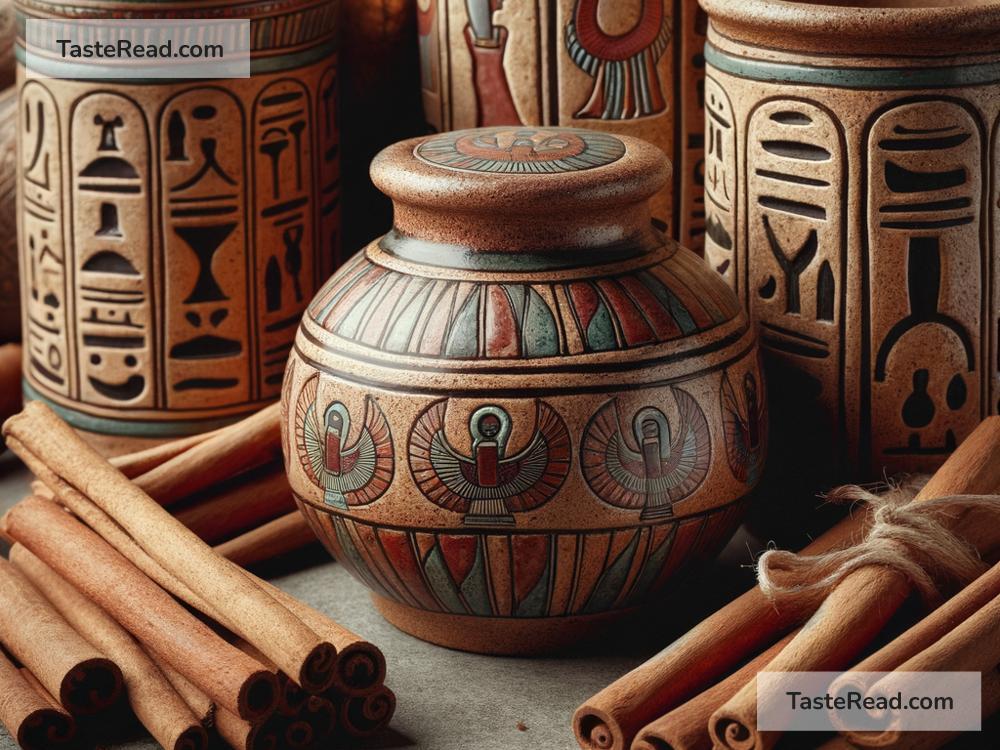The Curious Story of Cinnamon in Ancient Egyptian Embalming
Cinnamon is a spice we often associate with warm, comforting dishes like cinnamon rolls or apple pie. But a closer look at history reveals that this fragrant spice has had many surprising uses. One of the most curious is its role in ancient Egyptian embalming practices. Thousands of years ago, cinnamon wasn’t just a kitchen ingredient—it was part of a ritual tied to life after death.
Cinnamon: A Precious Commodity
Today, we can buy cinnamon easily at the grocery store. In ancient times, however, cinnamon was extremely rare and valuable. It came from faraway lands and required long, dangerous journeys over land and sea to acquire. Most historians believe cinnamon originated in South Asia, specifically Sri Lanka and southern India, though it was also cultivated in parts of Southeast Asia.
Because of its rarity, cinnamon was treated like treasure. It was traded along the Silk Road and transported to places like Ancient Egypt, Greece, and Rome. The spice was so prized that it was often given as an offering to gods or as a luxury gift to kings and queens. In Ancient Egypt, cinnamon wasn’t just valued for its flavor; it had a much deeper meaning, especially when it came to mortuary rituals.
Death and Afterlife in Ancient Egypt
The Ancient Egyptians believed in life after death. For them, death was not the end but a transition to another existence. To ensure the dead could live well in the afterlife, Egyptians went to great lengths to prepare the body for this journey. This preparation was called embalming, a process designed to preserve the body for eternity.
Embalming involved removing internal organs, drying out the body, and wrapping it in layers of linen. This combination prevented the body from decaying over time. What might surprise you is that spices like cinnamon were often used during embalming.
Why Did They Use Cinnamon?
Cinnamon had important qualities that made it suitable for embalming. First, it has a strong, pleasant aroma. When someone died, their body could start to smell unpleasant as decomposition set in. Cinnamon helped mask these odors during the embalmers’ work.
But fragrance wasn’t the only reason. Cinnamon also has natural antimicrobial properties. This means it can help slow down decay caused by bacteria. The Egyptians may not have fully understood the science behind this, but they knew that cinnamon helped keep the body fresh, which was essential for preserving it for eternity.
Additionally, cinnamon had symbolic significance. It was expensive and rare, making it a worthy offering for the dead. By using such a costly material, Egyptians showed their respect and love for the deceased, especially for wealthy or important individuals like pharaohs or nobles.
A Connection to Ritual and Sacred Beliefs
For the Egyptians, cinnamon wasn’t just practical—it was also sacred. Many historians believe it was used during holy rituals connected to death and burial ceremonies. Texts from this period mention the use of various spices and oils, including cinnamon, as part of the process of honoring gods and preparing the dead for the afterlife.
The famous “Ebers Papyrus,” a medical document from around 1550 BCE, lists cinnamon among the materials used in treatment and rituals. It’s clear the Egyptians believed cinnamon had a spiritual significance beyond its practical purposes.
The Journey of Cinnamon to Egypt
One of the most fascinating aspects of cinnamon’s role in ancient Egyptian embalming is how it got there in the first place. Egypt doesn’t naturally grow cinnamon. Traders had to bring it from distant regions like India and Southeast Asia.
These trade routes were long and complex. Cinnamon often traveled through Arabia, where middlemen sold it to merchants heading to Egypt. Because it was such a coveted item, legends sprung up around its origins. For example, early traders told stories that cinnamon was collected from the nests of giant birds to make it seem even more exotic and valuable.
A Spice Fit for Pharaohs
The use of cinnamon in embalming shows how much the Egyptians valued their dead—and the afterlife. Even today, some ancient tombs still have traces of the oils and spices used in embalming, proving just how durable these materials were.
Although cinnamon played a small part in ancient embalming practices, it offers a glimpse into how the Egyptians combined practical knowledge with their rich spiritual beliefs. The inclusion of such a rare and expensive spice reflects their commitment to honoring both the body and the soul. It also highlights the connections between different cultures that brought goods like cinnamon to Egypt.
Cinnamon’s Legacy
The Egyptians weren’t the only ones to use cinnamon in unique ways. Later cultures, including the Romans, also valued cinnamon for its fragrance, medicinal properties, and symbolism. However, the Egyptians stand out for using it as part of the embalming process—a practice deeply tied to their worldview.
Today, when you see cinnamon on your spice rack, take a moment to think about its remarkable journey. From the jungles of Southeast Asia to the sacred tombs of ancient Egypt, it has played an extraordinary role in human history. More than just a spice, cinnamon is a reminder of how connected food, medicine, and ritual are to the lives—and deaths—of people across time.


